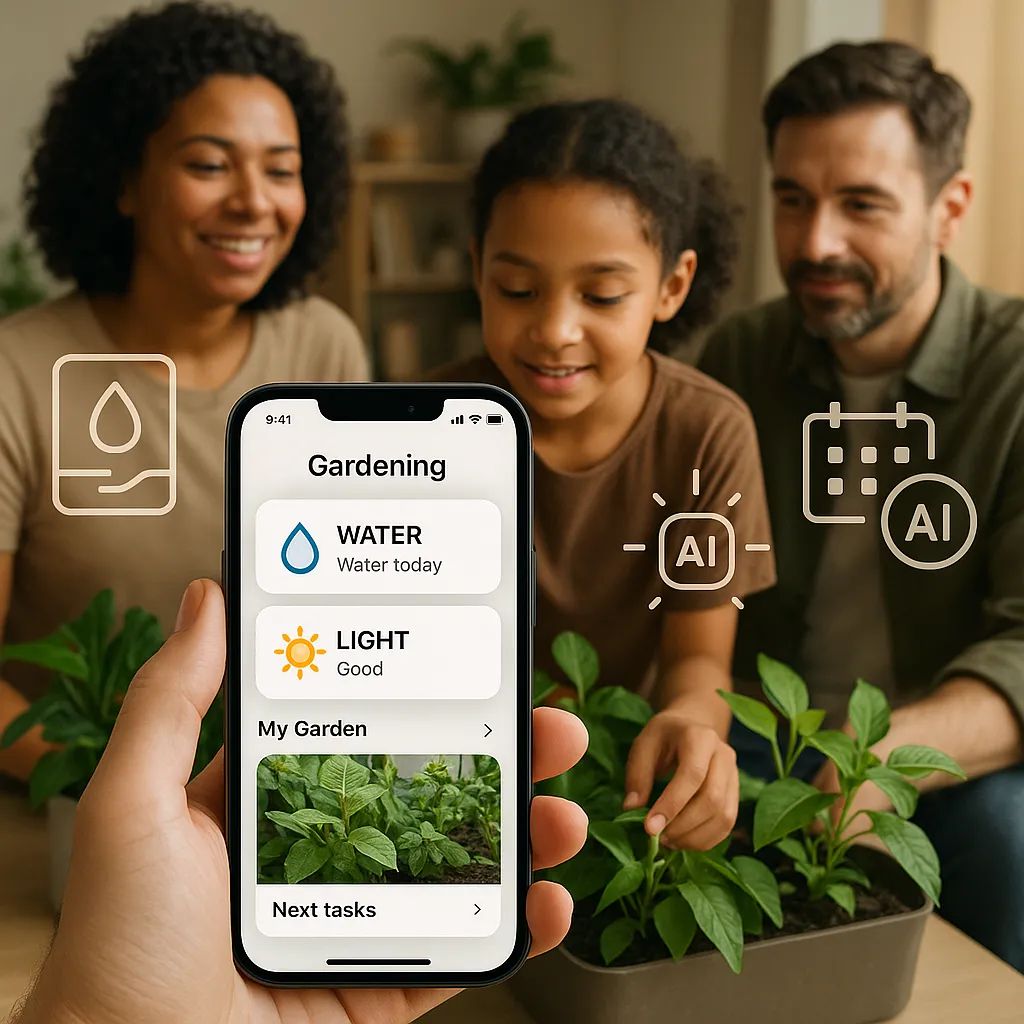
Gardyn Smart Gardens: How Families Are Growing Healthier, Happier (and Tastier) Lives—Even If the Backyard Is Just a Window Sill
Remember when salad was lettuce, maybe a sad tomato, and the word "fresh" had all the romance of grocery store shrink wrap? Those days are finished at our house.
After four months living with a Gardyn indoor garden, I catch my kids reaching for fresh lettuce and basil because it's there—growing, bright and lush—in the corner of the kitchen. The old resistance to "green stuff" at dinner? It vanished right around the second homegrown tomato.
What Is a Gardyn, and Why Should Families Pay Attention?
Most people walk by the hydroponic section at Lowe’s or Home Depot with a raised eyebrow—indoor gardens look futuristic, sometimes even intimidating. The Gardyn system is a vertical column with LED lights, water sensors, and a surprisingly lively AI assistant that lets you do lazy-person garden supervision from your phone. There's an app, but the real fun is watching new sprouts pop up next to kale that's exploding out the side on a blizzard night in February.
For families—especially anyone with school-age kids—the kitchen turns into an indoor science project crossed with a grocery store. You pick cherry tomatoes, mini cucumbers, or rainbow chard while making breakfast. It changes daily routines. We eat more colors now, and frankly, better food.
A Family’s Hands-on Story: Living With Gardyn
We took the plunge four months ago. There was skepticism—will anyone water it? Will it even grow?—and then, two weeks in, the little arugula leaves started crowding out the kale. We couldn't keep up with the lettuce (there is a thing as too much, but neighbors appreciate free salad bags).
Eating better got easy because food was actually in reach. My kids graze on snap peas instead of crackers. They know what roots look like because they see them dangling in water. I get about as much satisfaction from topping a sandwich with homegrown basil as my grandmother did pulling parsley in June. The difference? Our weather forecast is irrelevant. Heatwaves, snowstorms, not my problem.
The Tech (and the Whys) Behind AI-Driven Indoor Gardens
Let’s clear this up: AI inside Gardyn isn’t the robot from a sci-fi flick. It’s a quiet helper. The app reminds you to top up the water, nudge the nutrients, or move a seed pod to a sunnier spot because basil likes that (well, the app says it, but you get the point).
The science does more than automate chores. Built-in sensors keep light cycles, irrigation, and root health on a tight schedule, which means the bad parts of gardening—guessing, forgetting, and disappointment—are reduced. Kids can check the app and see how their strawberry plant's doing. It becomes a shared project, not another dinner-table argument.
If you want to geek out, Gardyn uses hydroponics and vertical farming thinking borrowed from NASA spinoffs and professional greenhouses. But what matters is the result: crisp, flavorful food, on your schedule.
Why This Changes Eating Habits, and Not Just for Health Nuts
Indoor gardens take away the toughest part about healthy eating—the daily hunt for good produce. Suddenly, tomatoes aren’t trucked across the country. Lettuce doesn't wilt before you even get it home. Kids get curious about vegetables because they grow in plain view, not hidden behind stacks of cereal boxes.
Lunches get a shake-up. Instead of “ugh, carrot sticks again?” you slice a handful of cherry tomatoes and harvest a mess of fresh greens. I never planned to have a classroom in my kitchen, but watching my kids argue about whose cucumber is longer beats fighting about screen time.
Tech + Family: Gardening Is Getting Smarter (and a Lot Less Fussy)
Automated indoor systems are more than gadgets—they’re game changers for busy households. Sensors and apps mean grandparents, teenagers, tech-phobes, and the forgetful (me) all keep things green and thriving. The AI learns, too. If your house runs dry in winter, it'll suggest water-tank checks. When a plant is crowded, the app pings you. Everyone gets smarter about what it takes to grow (and eat) real food.
Beyond the Kitchen: Healthy Eating Sticks
Our Gardyn didn’t just make us snack smarter. My kids now want salads at restaurants (sometimes). They prefer our basil to store-bought. Grocery bills dropped because $4 herbs and $6 boxes of lettuce aren't part of the cart anymore. Plus, with indoor gardening gaining momentum in cities (check out articles at The Cooldown for more on food forests and city-grown produce), the whole idea that you need a big backyard for homegrown food is a myth.
Final Thoughts
Four months in with Gardyn, I’m convinced: This isn’t a toy or a trend—it’s a genuine shift. Food feels different when you grow it together. Dinner gets easier. Healthy habits sneak in sideways when families tend a corner of green, no matter the weather.
Frequently Asked Questions
Q: Will my kids actually eat the things that grow? A: If they get to pick them, yes. The science teacher effect is real: curiosity beats nagging almost every time.
Q: How much work is it? A: After setup, it’s mostly topping up water and harvest kitchen confetti. The app will nag if you forget something important.
Q: Does indoor growing help save money on groceries? A: For salad lovers, yes—especially when the garden’s in full swing and you’re sending extra arugula home with your neighbors.
Q: Do you need to be a gardening expert? A: Not even close. Gardyn’s system and app do the heavy lifting, and every mistake is a learning moment instead of a disaster.
Q: Where can I find more info or stories from real families? A: Try browsing The Cooldown’s food and sustainability section, or scroll recent features on Family Goals in the Age of AI: The Summer Reset Every Parent Needs (and How Tech Can Help) for ways tech and healthy habits mix.
Want a sneak peek of what’s growing this month? Step into any house with a Gardyn system and you’ll find out fast: healthy food is back on the family menu, even before the mailbox gets snowed in.
About the Author
Warren Schuitema is a father, AI enthusiast, and founder of Matchless Marketing LLC. Passionate about leveraging technology to simplify family life, Warren has firsthand experience integrating AI solutions into his household. He has been testing tools like Cozi Family Organizer (Cozi), Ohai.ai (Ohai.ai), and other tools to coordinate schedules, automate household tasks, and create meaningful moments with his family. He has also created a handful of useful customGPTs for uses in family situations, such as meal planning, education, family traditions, and efficiency in the home. He is also an AI Certified Consultant that has been trained by industry experts across multiple areas of AI.
With a background in demand planning, forecasting, and digital marketing, Warren combines his professional expertise with his passion for AI-driven innovation. His practical approach emphasizes accessible solutions for busy parents looking to reduce stress and strengthen family bonds. Warren lives with his family, where devices like Google Home, Amazon Echo, and other AI-powered assistants help streamline their lives, showing that thoughtful technology can enhance harmony and efficiency.
